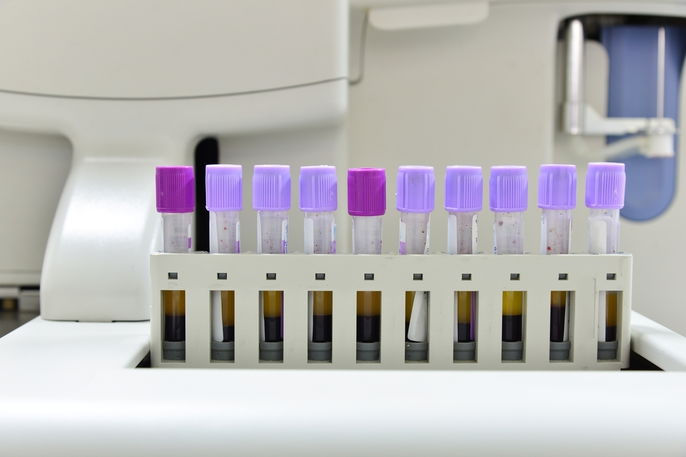Microcytic anemia is characterized by red blood cells that are smaller than average when observed through a microscope. It is also diagnosed when a blood sample is determined to have a mean corpuscular volume (MCV) of less than <80 fL.
Microcytic anemia is not a specific type of anemia, but rather a term that encompasses several different types, which includes iron deficiency anemia, thalassemia and sideroblastic anemia.
To confirm a microcytic anemia diagnosis, the general practitioner or hematologist will first evaluate the patient's symptoms. This is usually followed by a blood test to assess blood counts, which will then help to guide the most appropriate treatment. This may include changes to diet, iron supplementation and blood transfusion.

Main symptoms
The most common symptoms of microcytic anemia are:
- Excessive fatigue
- Weakness
- Dizziness
- Difficulty concentrating
- Pale skin
- Lack of appetite
- Irritability
If symptoms of anemia are present, it is important to consult your family doctor for a blood test to confirm a diagnosis and identify the type of anemia present. From here, the most appropriate treatment can be initiated.
Also recommended: Anemia Symptoms: 10 Signs of Low Hemoglobin tuasaude.com/en/anemia-symptomsTypes of microcytic anemia
The main types of microcytic anemia are:
1. Iron-deficiency anemia
Iron-deficiency anemia is one of the most common types of anemia. It is characterized by a decrease in iron levels in the body, which leads to low hemoglobin levels in the blood.
This type of microcytic anemia can occur after a major hemorrhage, but it can also develop due to a diet low in iron-rich foods. Learn more about the symptoms of iron deficiency anemia and how it can present.
2. Thalassemia
Thalassemia is a type of hereditary microcytic anemia that tends to occur in several people in the same family. This type of anemia develops due to abnormalities in hemoglobin production, which interferes with less oxygen to reach all parts of the body.
This type of microcytic anemia can be divided into several types, depending on which part of the hemoglobin is affected, and can therefore present with varying symptoms.
3. Sideroblastic anemia
Sideroblastic anemia occurs when iron is not used correctly to produce hemoglobin, leading to low hemoglobin levels. This type of microcytic anemia can be hereditary or acquired later in life, due to bone marrow problems or vitamin B6 deficiency.
Treatment options
Treatment for microcytic anemia varies depending on the type that is confirmed:
- Iron deficiency anemia: this condition is normally treated with iron supplements and a diet rich in iron-rich foods, such as beans, lentils and red meat. Check-out a list of iron-rich foods that you can incorporate into your diet.
- Thalassemia: this condition is treated according to the type identified. The doctor will likely advise increasing iron intake as well as taking iron and folic acid supplements, which can help to restore hemoglobin levels.
- Sideroblastic anemia: treatment usually involves the use of vitamin B6 and folic acid supplements. However, in more severe cases, a bone marrow transplant may be necessary.
In addition to these treatments, the doctor may advise a blood transfusion to restore hemoglobin levels in the blood.
Also recommended: Anemia Medication: 13 Medicines Your Doctor May Prescribe tuasaude.com/en/anemia-medication





























